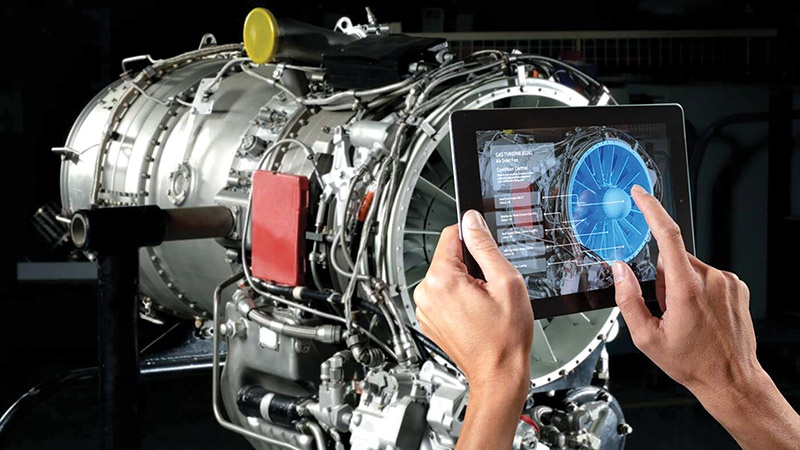4G/5G wireless networks driving digitalisation across industries
For one, the oil and gas industry is under immense pressure to improve operational efficiency, productivity, and worker safety; maintain cybersecurity; and, simultaneously, reduce environmental impact. In order to solve these challenges, oil and gas companies are accelerating their digital transformation.
 |
| Denis Brunetti, President, Vietnam and Myanmar Ericsson |
As they adopt use cases around automation, smart safety and environmental monitoring, the oil and gas industry is increasingly looking to advanced cellular connectivity to help drive efficiencies, while being more environmentally sound. The industry is expected to meet the global goal of net-zero carbon by 2050.
According to a McKinsey study, the use of advanced connectivity to optimise drilling and production throughput and improvements in maintenance and field operations could add up to $250 billion of value for oil and gas upstream operations by 2030.
Digitalisation enabled by cellular connectivity can change the outlook for oil and gas companies in many ways. With high-performance, low-latency private cellular networks, the oil and gas industry can leverage the Industrial Internet of Things (IIoT) to meet its challenges.
Oil and gas facilities are complicated operations and will likely always have a mix of technologies. A strong cellular 3GPP-based network, on 4G or 5G, can act as the primary network, supporting and linking things like Wi-Fi or hard-wired systems together into a cohesive unit.
Cellular networks are cost-effective and scalable while providing superior coverage. Thus, reliable, secure connectivity will accelerate innovation in the sector. Connected devices like phones, tablets, and sensors, as well as wearables, will allow workers to have up-to-the-minute information like schematics and maintenance records at their fingertips, enabling them to complete jobs faster. Sensor networks powered by private cellular networks can prevent environmental hazards by tracking fugitive emissions, methane leaks, and corrosion.
According to an Ericsson and Arthur D. Little study, a digitally enabled workforce is 8.5 per cent more productive and there is 48 per cent less loss from health and safety incidents. Overall, companies experience an 8 per cent reduction in operational spending due to the increased effectiveness of a digitally enhanced worker. Conducting manual site inspections of oil platforms is one of the most hazardous tasks in the industry.
With a cellular network to provide increased performance and reliability, high-resolution video drones and automated guided vehicles can easily perform surveillance tasks with maximum precision and accuracy and remove humans from potential danger. Drones can reduce inspection times by 90 per cent and downtime costs caused by manual inspections by 65 per cent. Health and safety incidents also decrease, resulting in 35 per cent less cost to the operator, according to an Ericsson Study.
 |
| 4G/5G wireless networks driving digitalisation across industries, illustration photo |
Digital transformation will harness cellular connectivity to optimise business operations of the oil and gas industry through data-driven insights for safer and efficient use of existing resources. To transform the industry, networks need to be reliable, powerful, and secure. Ericsson’s private cellular network solutions for the industry are enabling major safety and efficiency improvements and uncovering business value for oil and gas.
Meanwhile, with revenues in excess of $500 billion, the mining sector represents a major component of the global economy. The rising demand for fuel and rare minerals needed for our technology is igniting expansion in the industry. Along with higher productivity, though, mining organisations are under pressure to achieve better safety, improve sustainability, lessen environmental impact, and reduce operational costs.
Solving these multiple challenges is driving the evolution of the “smart mine” that harnesses data, automation, autonomous machines, and advanced technologies to achieve new efficiencies and capabilities. The realisation of the vision of the smart mine, though, requires a strong foundation: ubiquitous mobile connectivity. Ericsson’s connectivity solutions for the mining industry have been enabling significant productivity improvements and uncovering business value for both the mining industry and mobile telecom service providers. Our 5G-ready private networks have been successfully deployed by mining companies around the world.
In one example, Ericsson and mining giant Boliden, along with other partners, have co-created a mine of the future at Aitik. Ericsson’s high-performance mobile communications have enabled Boliden to automate drill rig operations. Automation has saved approximately 1 per cent of Aitik’s total annual costs and eliminated the need for two more drill rigs. The next step in the rollout is fully automated or remote-controlled trucks that will deliver smoother transport flow and lower fuel consumption and emissions.
Elsewhere, Ericsson and Canadian-based Ambra partnered last year to deliver the world’s deepest underground LTE network for the Agnico Eagle mining complex, LaRonde, in Quebec. Located 3.5km below the surface, the 4G LTE private network provides data and voice services across the LaRonde mine site and enables several IoT use cases to improve safety and mining operations.
The benefits of installing a private 4G LTE network included real-time communications across the mine, a safer workplace, more efficient operational activities, and more sustainable mining.
Only robust wireless connectivity can handle the huge amounts of data and voice communications that are mission-critical to smart mining. A 5G-ready private cellular network introduces high-speed connectivity, low latency, and strong performance, optimised for IoT and required in a mine’s high device density environment.
Ericsson’s connectivity solutions for the mining industry have been enabling major productivity improvements and uncovering business value for both mining and mobile telecom service providers.
As we are seeing across the oil and gas industry, as well as the mining sector globally, we expect secure and reliable connectivity with 4G and 5G will drive a strong wave of digitalisation in Vietnam as well.
What the stars mean:
★ Poor ★ ★ Promising ★★★ Good ★★★★ Very good ★★★★★ Exceptional
Themes: Digital Transformation
Related Contents
Latest News
More News
- Businesses ramp up production as year-end orders surge (December 30, 2025 | 10:05)
- Vietjet chairwoman awarded Labour Hero title (December 29, 2025 | 13:06)
- How to unlock ESG value through green innovation (December 29, 2025 | 10:03)
- AI reshapes media and advertising industry (December 29, 2025 | 08:33)
- FPT and GELEX sign deal to develop blockchain tech for global markets (December 29, 2025 | 08:29)
- Vietnam’s GDP forecast to grow by 9 per cent in 2026 (December 29, 2025 | 08:29)
- Women entrepreneurs are key to Vietnam’s economic growth (December 29, 2025 | 08:00)
- Vietnam's top 500 value-creating enterprises announced (December 27, 2025 | 08:00)
- The PAN Group shaping a better future with ESG strategy (December 26, 2025 | 09:00)
- Masan Consumer officially lists on HSX, marking the next phase of value creation (December 25, 2025 | 13:20)

 Tag:
Tag:





















 Mobile Version
Mobile Version